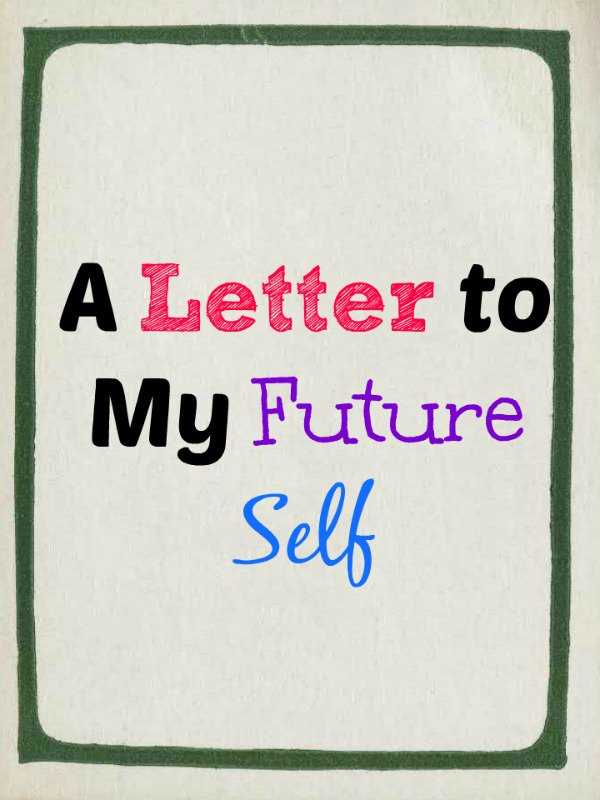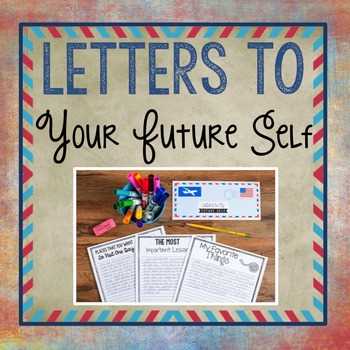Easy Letter to Future Me Template for Personal Growth

Have you ever wondered where you’ll be in a few years or what advice your present self would give to the person you are becoming? Taking a moment to express your thoughts to your future self can be a powerful way to set intentions, track growth, and find clarity in your current path. It’s a simple yet meaningful exercise that allows you to reconnect with your goals and aspirations.
Writing down your reflections not only helps you gain insight into where you are today but also offers a way to measure how much you’ve evolved over time. This practice can bring comfort, offer motivation, and even reveal new perspectives as life unfolds. By sharing your hopes, dreams, and even questions with your future self, you create a personal time capsule of emotions and wisdom.
Whether you’re looking to make decisions, understand your desires, or simply document your current mindset, expressing your thoughts in writing provides a unique way to pause and look ahead. Through this process, you create a tangible connection between where you are now and where you want to go in the future.
Understanding the Concept of a Letter
At its core, writing a message to oneself is an introspective activity that connects the present with the distant future. This act serves as a tool to articulate hopes, reflect on current circumstances, and set clear intentions. It involves capturing thoughts that represent personal growth, challenges, and desires, ultimately creating a snapshot of one’s current mindset.
The Purpose Behind Writing to Yourself
When engaging in this practice, the objective is not just to communicate with your future version, but to understand your current state and aspirations. The process offers a chance to:
- Reaffirm personal goals and intentions.
- Gain insight into current challenges and how to approach them.
- Track your development over time.
The Emotional and Practical Benefits
Writing to your future self allows you to organize thoughts, clarify objectives, and manage emotions. Whether you aim to reflect on your progress or imagine how your life will evolve, this process offers numerous advantages:
- Providing closure on past decisions.
- Inspiring motivation by reminding yourself of set goals.
- Offering a sense of accountability to stay on track.
Importance of Writing to Your Future
Taking the time to put your thoughts into writing creates an opportunity to reflect on your life’s direction and set intentions for what lies ahead. This act can be transformative, allowing you to gain clarity and perspective on your goals, values, and the path you want to follow. By doing so, you establish a personal connection with your evolving self, which is essential for growth and self-awareness.
One of the key aspects of this practice is the ability to track your journey over time. Writing helps organize your thoughts and gives you a reference point to compare where you are now with where you envision yourself in the years to come. This process not only fosters clarity but also strengthens your commitment to personal development.
| Benefit | Explanation |
|---|---|
| Self-Reflection | Writing allows you to reflect on your current goals, challenges, and accomplishments. |
| Clarity of Purpose | Expressing your thoughts helps solidify your intentions and direction in life. |
| Emotional Clarity | Putting feelings into words can provide emotional insight and relief. |
| Accountability | Documenting your aspirations reinforces your commitment to achieving them. |
Steps to Create a Meaningful Message
Crafting a thoughtful and impactful message requires more than just writing words down. It involves reflecting on your present self and thoughtfully articulating your desires, dreams, and personal insights. To ensure that your message holds real meaning, it’s essential to approach the process with intention and clarity. Below are key steps to help you create a message that resonates deeply with your personal journey.
1. Reflect on Your Current Self

Before writing, take a moment to reflect on your present situation. What are your biggest challenges? What have been your accomplishments? Understanding where you are today is the first step in creating a message that is both meaningful and relevant. This self-awareness will allow you to frame your thoughts with authenticity and purpose.
2. Define Your Goals and Intentions
Identify what you want to achieve in the short and long term. Be specific about your goals, whether they relate to personal growth, relationships, or career. By clearly defining your intentions, you are not only setting yourself up for success but also creating a roadmap that will guide your future decisions and actions.
Essential Components for Your Template
When crafting a meaningful message to yourself, certain elements are crucial to ensure that your writing is purposeful, reflective, and clear. These components help guide your thoughts, making the process easier and more effective. Whether you’re aiming to reflect on personal growth or set specific goals, incorporating these key aspects will give your writing structure and depth.
First, it is important to include an opening statement that establishes the intent behind your message. A clear introduction sets the tone for what follows, allowing you to explain why you are writing and what you hope to achieve. This could include your current state, aspirations, or challenges you want to overcome.
Next, focusing on specific goals or reflections helps give the message direction. Break down your thoughts into manageable sections–whether it’s long-term ambitions, personal growth, or even specific milestones you hope to reach. Each section should feel distinct yet part of a cohesive whole.
Finally, consider adding a closing note that wraps up the message. This could be a reminder to stay motivated, a call to action for your future self, or simply an affirmation of confidence. Ending with a positive and hopeful note helps reinforce the message’s purpose and encourages a sense of commitment to the journey ahead.
How to Tailor It to Your Goals
To create a truly meaningful message, it’s essential to align your thoughts and reflections with your specific aspirations. By tailoring your writing to match your personal goals, you can ensure that it serves as a motivational tool, a guide, and a reminder of what you want to achieve. Personalizing your approach allows you to stay focused and committed as you work toward your objectives.
Begin by identifying your most important goals. These could range from career milestones to personal growth targets. Once you’ve pinpointed your ambitions, frame your message in a way that supports them. For example, if one of your goals is to improve your health, include reflections on the current habits you’re trying to change or adopt, and visualize the person you hope to become.
It’s also helpful to break your goals into actionable steps. By including concrete plans and timelines, you create a roadmap that your future self can follow. This approach not only adds clarity but also reinforces your commitment to making progress. The more specific you are about your objectives, the more likely it is that your message will inspire and guide you as you move forward.
Best Ways to Store and Reflect Later
Once you’ve written your message, preserving it in a way that allows for easy access and future reflection is crucial. The method you choose to store your thoughts will determine how effectively you can revisit them and measure your progress over time. Selecting a storage solution that works for you ensures that your reflections remain impactful and relevant when the time comes to revisit them.
One effective way to store your message is by keeping it in a digital format. You can save it in a password-protected document or a cloud storage service. This option offers easy access from multiple devices, allowing you to revisit your reflections at any time. It also provides a secure way to ensure that your thoughts are preserved, regardless of physical changes or challenges.
Alternatively, you may choose a physical approach, such as writing your message by hand and placing it in a sealed envelope or journal. This method provides a personal and tactile experience, making the act of revisiting your words feel more meaningful. To further enhance this, you can set a specific date to open and reflect on it, creating a moment of anticipation and growth.
Whichever method you choose, it’s important to make sure that your message is stored in a way that will remind you of the person you were and the goals you set. The key is to make the process of reflection as simple and intentional as possible, allowing you to fully engage with your past thoughts and learn from them.